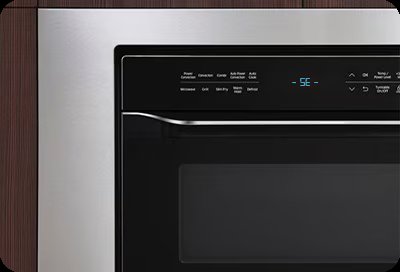
Microwaves, those convenient kitchen wizards, are filled with electronic circuits and sensors—so when something goes awry, they let us know through error codes. The “OE” on your Samsung microwave signals a potential issue, often related to a failure in the microwave’s heating process. It’s important to figure out if it’s a simple hiccup or something that might require more attention. Don’t worry, we’ll dive into this step by step, just like a story unfolding a chapter at a time.
Understanding the OE Error Code
First off, let’s break down what the “OE” error code really means. In the world of Samsung microwaves, “OE” is often associated with issues in the oven’s temperature sensor. Think of the sensor like a thermometer inside the microwave that ensures your food cooks evenly by monitoring the heat. If it’s not working correctly, the microwave might not reach the desired temperature, or it could overheat, just like when your home thermostat isn’t working right.
Imagine this sensor as a traffic light inside your microwave. It tells the appliance when to heat and when to stop, keeping everything in order. If this light flickers or stops working, the traffic—heat, in this case—runs into chaos. That’s exactly what the error code is warning you about.
When this code pops up, it can stem from a few reasons. It might be due to something as simple as a temporary glitch in the microwave’s software, or a more complex problem with the sensor itself. The key is not to panic but to understand that this is the microwave’s way of communicating that it needs some attention.
Causes and Effects of the OE Error Code
Okay, so what exactly causes this error? There are a few suspects in this mystery. One common cause is a faulty temperature sensor. Over time, like any electrical component, the sensor can wear out or fail, leading to inaccurate readings. Imagine trying to cook a cake with a broken oven thermometer—it just wouldn’t turn out right. Similarly, a faulty sensor can lead to the microwave not heating properly or shutting down unexpectedly.
Another potential cause can be issues with the control board. This is the microwave’s brain that processes signals coming from the sensor. If there’s a miscommunication between the two, the microwave might think there’s a problem even when there isn’t. It’s like when your computer freezes because too many tabs are open—it’s overwhelmed.
The effects of this error are pretty straightforward: your microwave might not heat your food, it could turn off suddenly, or it might even overheat. This not only affects your cooking but could pose safety risks too. No one wants to bite into a cold lasagna or, worse yet, deal with a smoking microwave.
Troubleshooting the OE Error Code
Now, you’re probably wondering, “What can I do about it?” Fortunately, there are a few troubleshooting steps you can take before calling a professional or considering a replacement. First, try the simple solution that works with most electronics: unplug the microwave, wait a few minutes, and plug it back in. This reset can sometimes clear up minor software glitches.
If the error persists, it’s time to inspect the temperature sensor. If you’re handy, you might be able to access the sensor and check for visible damage or loose connections. Remember, safety first—ensure the microwave is unplugged while you’re doing this. It’s like checking the wiring of a lamp before changing the bulb.
However, if fiddling with wires and circuits isn’t your cup of tea, or if the error continues after a reset, it’s best to contact a professional technician. They have the right tools and expertise to diagnose and fix the issue without causing further damage—or voiding your warranty.
Preventative Measures and Safety Tips
Prevention, as they say, is better than cure. To keep that pesky OE error at bay, it’s vital to practice good microwave maintenance. Regularly clean your microwave, inside and out. Grease and food particles can get lodged in places they shouldn’t be, leading to malfunctions. It’s like keeping a car clean to ensure it runs smoothly.
Also, avoid slamming the microwave door, as this can damage the control panel and sensor connections over time. Gentle handling goes a long way in prolonging the life of your appliances. Think of your microwave as you would a fine instrument—handle it with care, and it’ll play sweet music for years to come.
Lastly, if your microwave often throws error codes or behaves erratically, consider consulting a professional technician for a thorough check-up. This might prevent minor issues from snowballing into major repairs or replacements.
In the end, while dealing with an error code can seem daunting, with a little patience and knowledge, you can often troubleshoot the problem effectively. Just remember, when in doubt, it’s always safest to seek professional assistance.